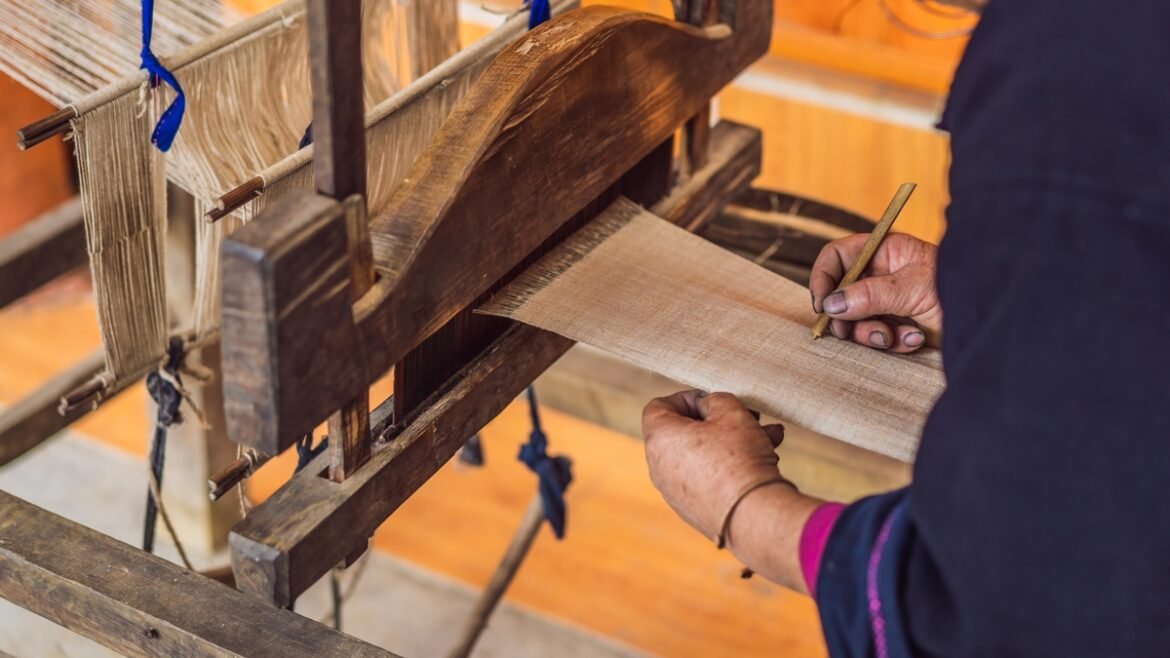The transformation of the humble flax plant into luxurious linen fabric is a testament to human ingenuity. Here’s a glimpse into the age-old art of linen weaving:
- Harvesting the Flax: The journey begins with the harvesting of the flax plant at its peak maturity. Traditionally, the stalks were pulled up by hand, a practice that preserved the length of the fibers.
- Retting & Separation: The harvested stalks undergo a natural process called retting, where they are spread out and exposed to moisture and microbes. This loosens the fibers from the woody core of the stalk.
- Scutching & Hackling: After retting, the brittle outer part of the stalk is removed through scutching. Hackling further separates and cleans the long flax fibers, aligning them for spinning.
- Spinning & Weaving: The cleaned fibers are then spun into strong threads. These threads are skillfully woven on looms to create the beautiful and functional fabric we know as linen.
The Final Touch: From Fabric to Fashion
Once woven, linen fabric undergoes finishing processes like bleaching, dyeing, and softening to achieve the desired color and texture. Skilled tailors then transform this exquisite material into a variety of garments, from airy summer dresses to timeless shirts and homeware essentials.
The Legacy of Linen: Sustainable Luxury
Linen is a fabric steeped in history and tradition. Its natural properties and timeless elegance continue to captivate modern consumers. By choosing linen, you’re not just investing in comfort and style, you’re making a conscious choice for a sustainable future. So, the next time you admire a piece of linen clothing or homeware, take a moment to appreciate the remarkable journey of the flax plant, a true gift of nature.


2 Comments
Martin Moore
Love this wonderful idea!! Thanks for sharing!
Miki Williams
What a nice article. It keeps me reading more and more!